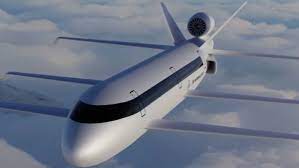The last time that I wrote about a potential Airline disrupter was back in late March. Interestingly, the source article was written back at this point but I didn’t find it for a few months.
In this case, the change is in design rather than in the fuel (the last article on planes was looking at using biofuels made from algae. I should note, that this is probably possible to power any aircraft, so both changes could team up.
In this case, rather than changing the fuel, the layout of the plane was changed. Rather than 1 relatively thick wing, they replaced it with 3 thin wings distributed along the body of the plane.

One of the main advantages of this design, is that there is no natural rotating point. Generally the tail of the plan is required to keep the plane flying level (this tail is recognized as one of the most problematic parts of the plane in terms of efficiency).
Why is this design exciting? Well this plane would have a carbon footprint 70-80% lower than current aircraft. This means that it is incredibly cheap to run, and therefore cheaper for passengers to fly on. Also of interest is the fact that this design makes the aeroplane far safer. Due to its higher efficiency it can also fly an incredibly long way – 10,500 miles, far enough to easily fly London to Australia ( this would suggest that perhaps in the future, non stop flights to new Zealand are not too far off). Another advantage, is that due to its low drag coefficient, it would fly at 690 miles per hour (mach 0.9) – more than 100 miles an hour faster than normal passenger jets. In a similar way, London to Johannesburg would be a little over 8 hours.
So this plane would be cheaper to fuel, fly further and faster. It is predicted to be far cheaper to maintain, and to have a life span of twice current planes. It would have a wider body, so take more passengers than normal. It has a high lift coefficient, allowing it to take off from shorter runways, allowing it to access more of the world. Due to the how thing the wings are, they would not be able to store fuel anymore, so this would have to go in the proper body of the plane – current plans would be at the top of the plane over the passengers. As well as having a lifespan of roughly 50 years, it is thought that each plane will take half as long to build.
Whether we see an aircraft like this is anyone’s guess. Moving to one engine at the rear of the plane, probably rules out electric propulsion, though who knows. Of course with wings as slim as this it is unlikely to be able to accommodate dispersed power.











